
RHEOLOGICA ACTA
Scope & Guideline
Exploring the Dynamics of Complex Fluids
Introduction
Aims and Scopes
- Complex Fluid Dynamics:
Research emphasizing the behavior of complex fluids, including non-Newtonian fluids, polymer melts, and colloidal suspensions, under various flow conditions. - Experimental and Numerical Methods:
Utilization of both experimental techniques (rheometry, microrheology) and numerical modeling approaches to investigate the rheological properties and behaviors of materials. - Material Characterization:
In-depth studies on the rheological characterization of advanced materials, including polymers, gels, and suspensions, to understand their mechanical properties and performance. - Yield Stress and Thixotropic Behavior:
Investigation into yield stress materials and thixotropic substances, focusing on their flow behavior, recovery, and applications in various industries. - Interfacial and Multiphase Rheology:
Exploration of interfacial phenomena and rheological behavior in multiphase systems, including emulsions and suspensions, emphasizing the role of interfaces in material properties.
Trending and Emerging
- Data-Driven Approaches and Machine Learning:
There is a notable increase in the application of machine learning and data-driven methods to rheological modeling and analysis, reflecting a trend towards integrating computational techniques with experimental data. - Rheology of Smart and Functional Materials:
Research into the rheological properties of smart materials, including magnetorheological and electrorheological fluids, is on the rise, emphasizing their potential applications in various technologies. - Sustainable and Green Materials:
The exploration of rheological properties in environmentally friendly materials, such as bio-based polymers and sustainable composites, is becoming more prevalent, aligning with global sustainability goals. - Multiscale Modeling and Simulation:
An increasing number of studies focus on multiscale modeling approaches to better understand complex fluid behaviors across different scales, from molecular dynamics to continuum mechanics. - Applications in Biomedical Engineering:
Emerging research concerning the rheology of biological fluids and materials, including blood and hydrogels, indicates a growing interest in applications within the biomedical field.
Declining or Waning
- Traditional Newtonian Fluid Studies:
Research focusing solely on Newtonian fluids has decreased, as the journal increasingly emphasizes non-Newtonian behaviors and complex fluid dynamics. - Basic Polymer Science without Rheological Context:
The exploration of polymer science topics that do not directly relate to rheological properties or behaviors is waning, as the journal pivots towards practical applications of rheology in materials. - Generalized Theoretical Models:
The publication of papers centered on generalized theoretical models without specific experimental validation or application has declined, indicating a shift towards more applied research. - Single-Phase Fluid Dynamics:
Papers focusing exclusively on single-phase fluid dynamics have become less frequent, with a growing interest in multiphase systems and their complex interactions.
Similar Journals
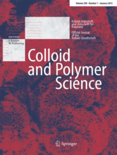
COLLOID AND POLYMER SCIENCE
Pioneering Insights in Colloid and Polymer DynamicsCOLLOID AND POLYMER SCIENCE is a prestigious peer-reviewed journal published by SPRINGER that serves as a vital resource for researchers, professionals, and students in the fields of Colloid and Surface Chemistry, Materials Chemistry, and Physical and Theoretical Chemistry. With ISSN 0303-402X and E-ISSN 1435-1536, the journal has established itself as a significant contributor to the scientific community since its inception in 1974, continuously providing valuable insights into the dynamic interplay between colloids and polymers. The journal is recognized for its rigorous quality, reflected in its Quartile rankings; it stands in Q3 for Colloid and Surface Chemistry and Physical and Theoretical Chemistry, and Q2 for Materials Chemistry and Polymers and Plastics in 2023. COLLOID AND POLYMER SCIENCE is an important platform for disseminating high-impact research that addresses fundamental and applied aspects of these critical fields, enhancing our understanding of material interactions and fostering innovations. The journal operates under traditional subscription models, ensuring that optimal academic rigor is maintained. With a strong emphasis on interdisciplinary studies, it encourages contributions that bridge gaps between theory and application, making it an essential reading for those aspiring to excel in the diverse world of materials science.
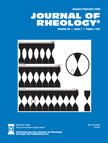
JOURNAL OF RHEOLOGY
Connecting Theory and Application in RheologyJOURNAL OF RHEOLOGY, published by the SOCIETY OF RHEOLOGY, is a premier academic journal that has been disseminating significant research in the field of rheology since its inception in 1957. With a focus on the behavior of complex fluids and soft materials, this journal plays a crucial role in bridging the disciplines of Condensed Matter Physics, Materials Science, and Mechanical Engineering. Its esteemed ranking in the top quartile (Q1) of multiple categories highlights its impact, particularly in Mechanical Engineering and Mechanics of Materials. Researchers and professionals can benefit from the comprehensive studies published within its pages, which combine theoretical insights with practical applications in diverse industries. Although it does not offer open access, the journal remains a vital resource for those seeking cutting-edge developments and discussions in rheology. The editorial office is located in Japan, under the guidance of Ralph H. Colby at Pennsylvania State University, ensuring a strong academic foundation and international collaboration. The JOURNAL OF RHEOLOGY continues to shape the future of rheological research, making it an essential part of any scholar's library.

COLLOID JOURNAL
Illuminating the pathways of physical and theoretical chemistry.COLLOID JOURNAL, published by PLEIADES PUBLISHING INC in the United States, is a pivotal platform for disseminating cutting-edge research in the fields of Colloid and Surface Chemistry, Physical and Theoretical Chemistry, and Surfaces and Interfaces. With an ISSN of 1061-933X and E-ISSN 1608-3067, this journal offers a valuable resource for researchers and professionals seeking to explore advancements in colloidal systems and surface phenomena. Although currently categorized in the lower quartiles (Q4) within its respective fields, the journal serves as an essential space for emerging ideas and methodologies, contributing to the broader understanding of material interactions at the micro and nano scales. The H-index and specific impact factor data are yet to be determined, but the journal maintains a dedication to high-quality peer-reviewed content that continues to shape the landscape of colloid science. Researchers and students alike will find the COLLOID JOURNAL an indispensable reference for keeping abreast of the latest developments, despite the absence of open access options, reflecting the journal's traditional publishing model. With converged years from 1989 to 2024, it represents a long-standing commitment to scholarly dissemination and exploration in its fields of study.
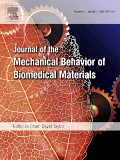
Journal of the Mechanical Behavior of Biomedical Materials
Exploring the Mechanics Behind Life-Saving MaterialsJournal of the Mechanical Behavior of Biomedical Materials is a leading academic publication dedicated to the intersection of mechanical engineering and biomedical innovation. Published by ELSEVIER in the Netherlands, this journal, which holds a solid presence within Q2 in Biomaterials and Biomedical Engineering, and Q1 in Mechanics of Materials as of 2023, features high-impact research with a measurable Scopus ranking that places it in the top tier of its fields. With an impressive percentile performance—82nd in Mechanics of Materials and 73rd in Biomedical Engineering—this journal serves as a vital resource for researchers, students, and professionals seeking to enrich their understanding of the mechanical behaviors of biomaterials and their applications. Spanning converged years from 2008 to 2024, it provides access to a wealth of pioneering research that advances the knowledge essential for the development of innovative biomedical applications. Engage with cutting-edge studies and broaden your expertise in the rapidly evolving realms of biomaterials and biomedical engineering through this authoritative publication.

Physical Review Fluids
Exploring the Depths of Fluid DynamicsPhysical Review Fluids is an esteemed journal published by the American Physical Society, focusing on the intricate and essential field of fluid dynamics. With an impressive Q1 ranking in categories such as Computational Mechanics, Fluid Flow and Transfer Processes, and Modeling and Simulation, this journal serves as a pivotal resource for researchers and professionals seeking to disseminate high-quality and innovative research findings. The journal's scope encompasses a broad spectrum of topics within fluid mechanics, promoting advancements in theoretical, computational, and experimental methodologies. Although it is not an open-access journal, its publications are critically well-received, underpinned by its strong standing in the Scopus rankings which place it in the top percentiles across various relevant fields. Physical Review Fluids has been a foundational platform for scholars to share their discoveries from 2016 through 2024, making it an indispensable asset in the ongoing evolution of fluid dynamics research.
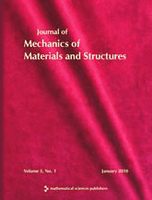
Journal of Mechanics of Materials and Structures
Fostering Academic Excellence in Material Behavior Research.Journal of Mechanics of Materials and Structures, published by Mathematical Science Publishers, is a distinguished periodical in the field of Applied Mathematics and Mechanics of Materials. With the ISSN 1559-3959, this journal has been a pivotal platform since its inception in 2006, providing insights and advancements in the mechanics of materials and their structural applications. Operating out of the University of California, Berkeley, this journal not only boasts a respectable standing within its categories, ranking Q4 in Applied Mathematics and Q3 in Mechanics of Materials as of 2023, but it also serves a crucial role in fostering academic discourse among researchers, practitioners, and students alike. Although it does not currently offer open access, its contributions to the respective fields are invaluable, underscoring the relevance and importance of continued research in understanding material behavior and structural integrity. Whether investigating theoretical frameworks or engineering applications, the Journal of Mechanics of Materials and Structures remains an essential resource for anyone dedicated to the advancement of the science of materials and structures.
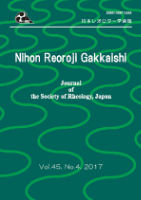
NIHON REOROJI GAKKAISHI
Connecting Theory and Application in Materials ScienceNIHON REOROJI GAKKAISHI is an esteemed journal published by the SOC RHEOLOGY, JAPAN, dedicated to advancing the field of rheology and its applications within condensed matter physics, materials science, and mechanical engineering. Since its inception in 1973, this journal has contributed significantly to the global discourse on fundamental and applied research, boasting a comprehensive coverage of innovative studies and breakthroughs up to 2024. Although it currently does not offer open access, it maintains a respected presence with a HIndex that reflects its historical impact and relevance. The journal is categorized in the Q3 quartile across several fields, indicating its essential contributions in these domains among a competitive cohort. With ranking positions of #454 in Mechanical Engineering and #334 in Condensed Matter Physics in Scopus, NIHON REOROJI GAKKAISHI remains an invaluable resource for researchers, professionals, and students aiming to explore and contribute to the ever-evolving landscape of materials science and engineering.
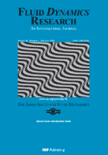
FLUID DYNAMICS RESEARCH
Connecting Theoretical and Experimental Studies in Fluid MechanicsFLUID DYNAMICS RESEARCH, published by IOP Publishing Ltd, is a pivotal journal dedicated to advancing the understanding of fluid dynamics through interdisciplinary research that spans several domains including mechanical engineering and physics. With an ISSN of 0169-5983 and E-ISSN 1873-7005, this journal provides a vital platform for researchers aiming to disseminate new findings and theoretical advancements in fluid flow and transfer processes. As of 2023, FLUID DYNAMICS RESEARCH holds a commendable position within the academic community, ranked Q3 in fluid flow and transfer processes, mechanical engineering, and miscellaneous physics and astronomy categories. The journal showcases a diverse array of articles that not only inspire collaboration among professionals and students but also ensure that theoretical and experimental studies are accessible for further development in the field. Operating from the United Kingdom, the journal offers a unique opportunity for scholars worldwide to contribute to the vibrant community dedicated to understanding the complexities of fluid dynamics, even as it anticipates converging its years of research from 1986 to 2024.

BIORHEOLOGY
Exploring the Flow of Life's ComplexitiesBIORHEOLOGY is a peer-reviewed journal published by IOS PRESS, dedicated to the interdisciplinary field of biorheology, which studies the flow properties of biological fluids and the mechanical behavior of biological tissues. With its ISSN 0006-355X and e-ISSN 1878-5034, this journal has been a vital source of scientific knowledge since its inception in 1965, with coverage extending to recent years and into 2024. As a respected publication within the realms of physiology and biochemistry, it is classified in Q4 in both Physiology and Medical Physiology categories as of 2023, showcasing its niche position within the academic community. The journal primarily aims to disseminate research findings that advance our understanding of biorheological principles and their applications in medicine and biology. Although not listed as open access, BIORHEOLOGY provides essential insights to researchers, professionals, and students eager to explore the complexities of fluid mechanics in biological systems, making it a valuable resource for fostering innovation and collaboration across scientific disciplines.

INTERNATIONAL POLYMER PROCESSING
Connecting Professionals through Polymer Research InsightsINTERNATIONAL POLYMER PROCESSING, published by WALTER DE GRUYTER GMBH, serves as a crucial platform for professionals and researchers in the fields of Chemical Engineering, Industrial and Manufacturing Engineering, and Materials Science, particularly focusing on polymers and plastics. With its ISSN 0930-777X and E-ISSN 2195-8602, this journal has been in circulation since 1988 and continues to expand its contributions to contemporary research trends through to 2024. Ranking in the third quartile across multiple categories, including Chemical Engineering (miscellaneous) and Materials Chemistry, it offers insightful and rigorous peer-reviewed articles that enhance the understanding of polymer processing technologies and innovations. This journal is vital for anyone engaged in polymer science and engineering, providing both theoretical and practical perspectives that advance the field. Although it does not provide open access, the journal's content is indispensable for academia and industry professionals looking to stay at the forefront of polymer research.